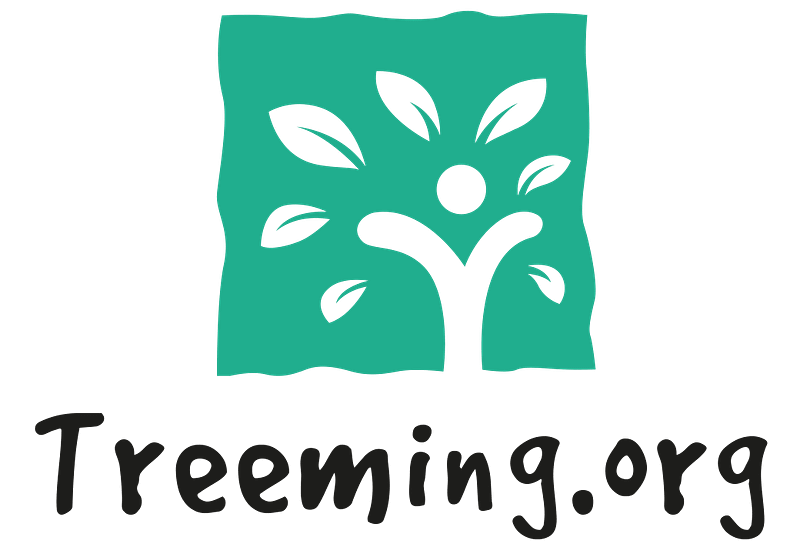A forest ecosystem refers to a vital component of the terrestrial ecosystem, encompassing a diverse range of flora and fauna that interact within a forested area. It plays a crucial role in sustaining various ecosystem services, including clean air, water, biomass production, soil nutrient balance, and support for indigenous communities. Forest ecosystems are dynamic entities, constantly exchanging energy and materials with adjacent systems and undergoing transformations that reflect the intricate interplay of biotic and abiotic factors. Understanding these complex systems is essential for their conservation and sustainable management.
Key Takeaways
- Forest ecosystems are critical for maintaining biodiversity, providing habitat for a multitude of plant and animal species.
- The flow of energy and materials through a forest is essential for its persistence and involves complex interactions between the biotic and abiotic components.
- Forests play a significant role in climate regulation through processes like carbon sequestration and the creation of microclimates.
- Disturbances such as fire, insect outbreaks, and human activities can profoundly impact forest ecosystems, but they also have mechanisms for recovery and renewal.
- Indigenous knowledge and practices are invaluable for the sustainable management and conservation of forest ecosystems.
The Heartbeat of the Forest: Energy and Material Flow
The Dance of Sunlight and Leaves
In the forest, sunlight is the primary source of energy. Leaves capture this energy through photosynthesis, converting it into chemical energy that fuels the entire ecosystem. Without sunlight, the forest would cease to thrive. This dance between sunlight and leaves is a delicate balance that sustains life.
Nutrient Cycles: The Forest’s Lifeblood
Nutrients like nitrogen, phosphorus, and potassium circulate through the forest in a continuous loop. These nutrients are absorbed by plants, consumed by animals, and eventually returned to the soil through decomposition. This cycle ensures that the forest remains fertile and vibrant.
- Nitrogen: Essential for plant growth and photosynthesis.
- Phosphorus: Vital for energy transfer and genetic material.
- Potassium: Important for water regulation and enzyme activation.
Water: The Veins of the Forest
Water flows through the forest like blood through veins, nourishing every living organism. It is absorbed by roots, travels up through the trees, and is released back into the atmosphere through transpiration. This continuous flow of water is crucial for maintaining the forest’s health and stability.
The forest is a complex, interconnected system where energy and materials flow seamlessly, ensuring the survival and growth of countless species.
The Symphony of Life: Flora and Fauna Interactions
The Canopy’s Embrace: Tree and Plant Diversity
When you walk through a forest, you are enveloped by a rich tapestry of tree and plant species. This diversity is the backbone of the forest ecosystem, providing habitat and food for countless creatures. The canopy, with its layers of foliage, creates microhabitats that support a variety of life forms. Forest Bathing, the practice of immersing oneself in the forest atmosphere, allows you to experience this diversity firsthand, feeling the interconnectedness of all living things.
Hidden Worlds: Soil Microbes and Fungi
Beneath your feet lies a hidden world teeming with life. Soil microbes and fungi form intricate networks that decompose organic matter, recycle nutrients, and support plant growth. These organisms are the unsung heroes of the forest, maintaining soil health and fertility. When you engage in Forest Bathing, you become more attuned to these unseen processes, appreciating the vital role they play in sustaining the forest.
The Animal Kingdom: From Insects to Mammals
The forest is alive with the sounds and movements of animals, from the tiniest insects to the largest mammals. Each species plays a unique role in the ecosystem, contributing to its balance and resilience. Insects pollinate plants, birds disperse seeds, and mammals help control populations of other species. As you explore the forest, you witness the intricate web of life, where every creature has a purpose and a place.
In the symphony of life, every note matters. The interactions between flora and fauna create a harmonious ecosystem, where each species contributes to the overall health and stability of the forest.
The Breath of the Forest: Air and Atmosphere
Photosynthesis: The Forest’s Gift to the World
In the heart of the forest, a miraculous process unfolds every day. Through photosynthesis, trees and plants convert sunlight into energy, releasing oxygen into the atmosphere. This vital respiratory process not only sustains the forest but also provides the oxygen we breathe. Imagine the forest as a green renaissance, where every leaf plays a part in combating climate change and promoting well-being.
Carbon Sequestration: Battling Climate Change
Forests act as immense carbon sinks, absorbing carbon dioxide from the atmosphere and storing it in their biomass and soil. This process, known as carbon sequestration, is crucial in the fight against climate change. By restoring forest ecosystems, we can enhance their ability to sequester carbon, making them vital respiratory healers of our planet.
The Microclimate: Forests Within Forests
Within the vast expanse of a forest, there exist smaller, unique microclimates. These microclimates are shaped by the forest’s structure, including the canopy and understory, and play a significant role in maintaining biodiversity. They create a mosaic of habitats, each supporting different species and ecological processes. The forest, in its entirety, is a complex and dynamic system, where every layer contributes to the overall health and resilience of the ecosystem.
The Resilience of Nature: Forest Disturbances and Recovery
When a forest burns, it may seem like the end, but it’s often just the beginning. Fire clears out old growth, making way for new life. This frequent disturbance can enhance the resilience of the ecosystem, allowing it to bounce back stronger than before. The ashes left behind enrich the soil, providing a fertile ground for seeds to sprout and grow.
Insects may be small, but their impact on forests is immense. Outbreaks can decimate trees, but they also play a crucial role in the ecosystem. By breaking down dead wood, insects help recycle nutrients back into the soil. This process supports new growth and maintains the forest’s health. In many ways, these tiny creatures are the unseen architects of the forest.
Human activities like logging and land use change have profound effects on forests. While these actions can lead to degradation, they can also be managed to support forest resilience. Practices like sustainable harvesting and ecological rotation-based forestry can help maintain the balance. By understanding and respecting the forest’s natural cycles, we can ensure its survival for future generations.
The resilience of forest ecosystems is a testament to nature’s ability to recover and thrive, even in the face of frequent disturbances.
The Guardians of the Forest: Indigenous Knowledge and Practices
Traditional Ecological Knowledge
Indigenous people have always provided meanings to natural ecosystems, but knowledge on local environments and their management has been eroded. Traditional Ecological Knowledge (TEK) is a body of knowledge and practices that have been developed over generations through direct contact with the environment. TEK encompasses a deep understanding of the relationships between living organisms, including humans, and their surroundings. This knowledge is crucial for sustainable forest management and conservation.
Sustainable Harvesting Practices
Sustainable harvesting practices are integral to the way indigenous communities interact with their forests. These practices ensure that the forest resources are used in a way that does not deplete them, allowing for regeneration and long-term sustainability. Indigenous methods often include selective logging, rotational farming, and the use of non-timber forest products. These practices are not only environmentally friendly but also economically viable for the communities.
Cultural Significance and Spiritual Connections
For many indigenous communities, forests are more than just a source of material resources; they hold profound cultural and spiritual significance. The forest is often seen as a living entity, a guardian, and a source of life. This deep connection fosters a sense of responsibility and stewardship, ensuring that the forest is protected and preserved for future generations.
The wisdom of indigenous communities offers invaluable insights into sustainable forest management and conservation. Their practices and beliefs are a testament to the harmonious relationship that can exist between humans and nature.
The Future of Forests: Conservation and Restoration
Reforestation Efforts: Healing the Earth
Reforestation is a beacon of hope in the fight against climate change. By planting trees in areas that have been clear felled or selectively logged, we can restore levels of biodiversity and improve the functioning of rehabilitated ecosystems. This global effort, exemplified by networks like TreeDivNet, is crucial for the conservation of biodiversity and the provision of essential ecosystem services.
Protected Areas: Sanctuaries of Biodiversity
Protected areas serve as sanctuaries for countless species, safeguarding them from the threats of deforestation and habitat loss. These areas are vital for maintaining the multiple resource values and environmental services that forests provide. As climate change continues to pose significant threats, the role of protected areas becomes even more critical.
Community Involvement: Grassroots Movements
Forestry is, first and foremost, about people. Community involvement in conservation efforts is essential for the sustainable management of forest ecosystems. Grassroots movements empower local communities to take an active role in protecting and renewing their forests, ensuring that the needs of today’s population are balanced with those of future generations.
"Recent scientific analysis shows us that many old-growth forests are under significant threat from climate change," said Agriculture Secretary Tom Vilsack. This highlights the urgent need for collective action to safeguard our forests for the future.
The future of our forests depends on our actions today. Join us in our mission to conserve and restore these vital ecosystems. By enrolling in our Forest Bathing Guide Certification, you can learn how to harness the healing power of nature and share it with others. Together, we can make a difference. Visit our website to learn more and get started on your journey to a healthier and happier life.
Conclusion
In the grand tapestry of life, forest ecosystems stand as vibrant, dynamic threads that weave together the fabric of our planet. They are not just collections of trees but living, breathing entities that support an intricate web of flora, fauna, and human communities. These ecosystems are the lungs of the Earth, providing us with clean air, fresh water, and fertile soil. They are sanctuaries of biodiversity, offering refuge to countless species and serving as a testament to the resilience and beauty of nature. As we continue to study and understand these complex systems, we are reminded of our profound connection to the natural world and our responsibility to protect it. The science of forest ecosystems is not just an academic pursuit; it is a call to action to preserve the delicate balance that sustains life on Earth. Let us cherish and safeguard these magnificent forests, for they are the heart and soul of our environment.
Frequently Asked Questions
What is a forest ecosystem?
A forest ecosystem refers to a vital component of the terrestrial ecosystem, encompassing a diverse range of flora and fauna that interact within a forested area. It plays a crucial role in sustaining various ecosystem services, including clean air, water, biomass production, soil nutrient balance, and support for indigenous communities.
How do forest ecosystems exchange energy and materials?
Forest ecosystems are open systems that exchange energy and materials with other systems, including adjacent forests, aquatic ecosystems, and the atmosphere. This exchange is essential for the continued persistence of the ecosystem.
What disciplines contribute to the study of forest ecosystems?
The study of forest ecosystems is a mix of biogeochemistry, ecophysiology, and micrometeorology, emphasizing the circulation, transformation, and accumulation of energy and materials within the ecosystem.
Why are forests considered more than just a community of trees?
Forests are much more than the present population or community of trees. They include biologically integrated communities of plants, animals, and microbes, together with the local soils and atmospheres with which they interact. Even forests that have been recently altered by fire, insects, disease, wind, or logging are still considered forests because of the biological and physical legacies from the previous forest.
What are some key ecosystem services provided by forests?
Forests provide a range of ecosystem services, including clean air and water, biomass production, soil nutrient balance, and support for indigenous communities. They also play a role in climate regulation and carbon sequestration.
How does primary production impact forest ecosystems?
Primary production is a pivotal process for forest ecosystems. It involves the production of organic compounds from atmospheric or aquatic carbon dioxide, primarily through photosynthesis. This process supports the entire forest food web and is a key indicator of forest health.









